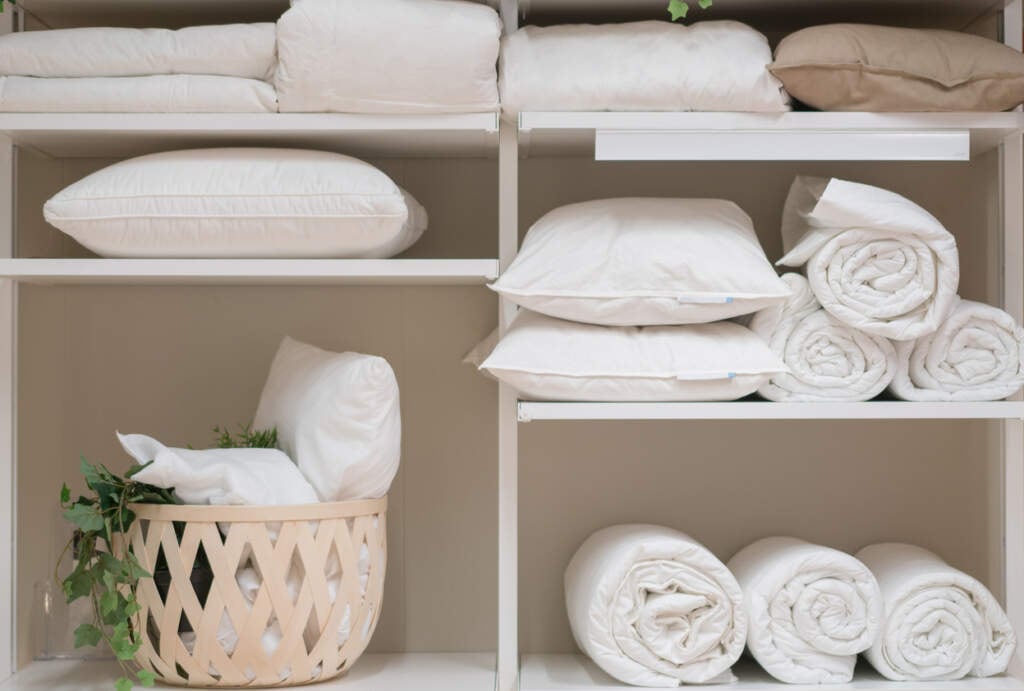
Your bedding, from your mattress to your quilt, is essential to getting a good night’s sleep. Choosing the right bedding can make all the difference in your quality of sleep, comfort and overall well-being.
In this blog, we’ll cover what to consider when it comes to choosing bedding that’s right for you, including mattresses, mattress protectors, mattress toppers, sheet sets, quilts and pillows.
How to Buy Bedding Suitable for Your Needs
Before we get into the specifics, let’s go over the basics of buying the right bedding for different needs:
If you have allergies: Go for hypoallergenic bedding made from natural fibres like cotton, silk or bamboo.
If you’re a hot sleeper: Go for naturally breathable and moisture-wicking materials like bamboo, cotton or linen.
If you have sensitive skin: Go for hypoallergenic materials like bamboo or cotton
If you want something versatile: go for a high-quality cotton blend, such as cotton-polyester for the best of both worlds. Cotton offers softness and breathability, and polyester provides durability and wrinkle resistance.
How to Choose a Mattress
A mattress is an investment in your sleep and overall health. The key to a good night’s sleep is a quality mattress. But with so many options available, it can be tricky to choose the right mattress for you. When choosing a mattress, there are a few key factors to consider–the material, firmness level, weight and sleeping position.
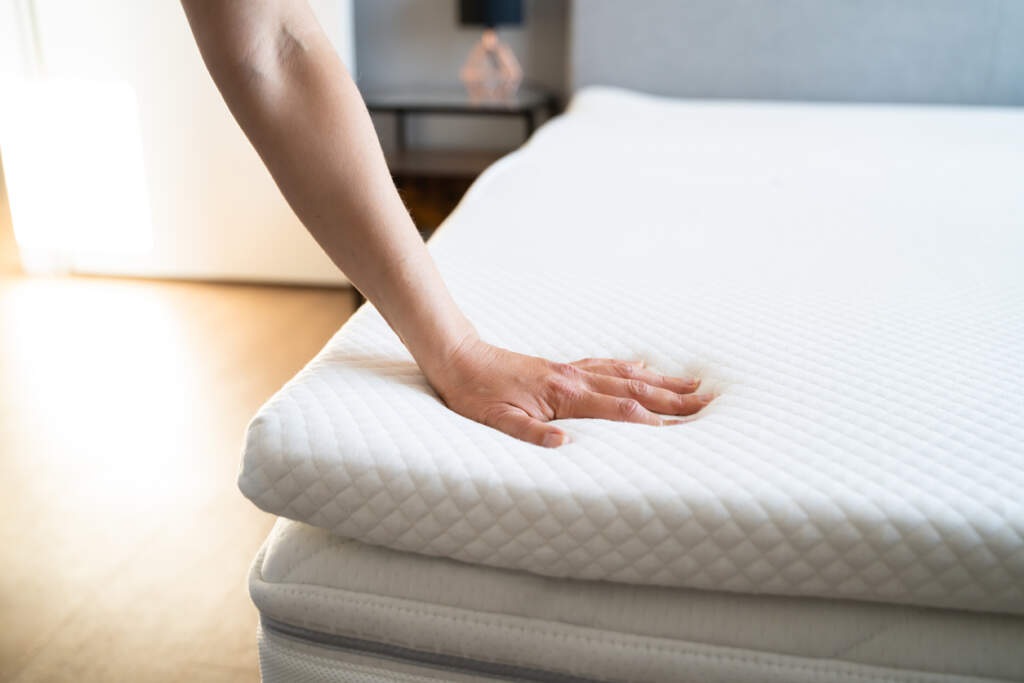
Size
Ideal for toddlers and children.
Ideal for growing children.
Ideal for guests, teenagers or a single adult.
Ideal for two adults or a guest bedroom.
Ideal for two adults wanting extra space.
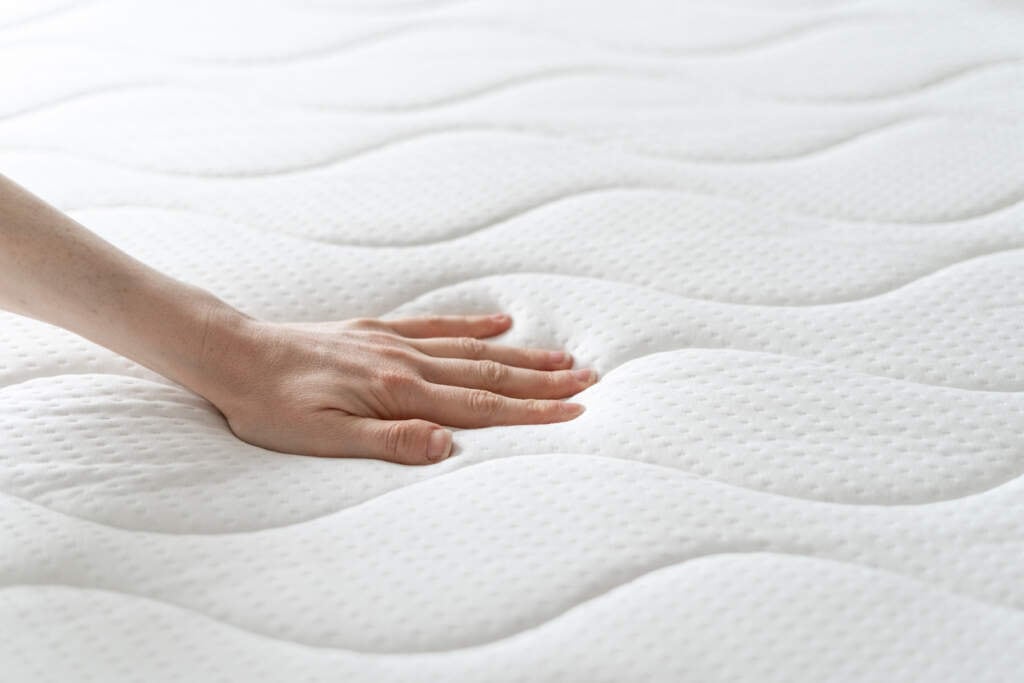
What is the Best Mattress for You?
So, what mattress material is best for you? This depends on your needs and preferences. Consider what your most common sleeping position is, whether you share a bed with someone else, whether you have allergies, or tend to sleep hot.
The most common mattress materials include:
- Innerspring: these mattresses are made of coils, providing support and durability.
- Latex: typically, latex mattresses are more responsive and bouncier than innerspring mattresses. They tend to suit those who overheat while sleeping.
- Memory foam: these mattresses are designed to mould to the body, helping relieve pressure while you sleep.
- Hybrid: hybrid mattresses offer the best of both worlds, combining memory foam or latex layers on top of an innerspring mattress so you can get the best of both worlds.
The firmness level of a mattress is one of the key factors to consider when buying a mattress. Mattresses are usually described as soft, medium firm or firm. When choosing the firmness level of your new mattress, consider your usual sleeping position.
- Soft mattresses are suitable for side sleepers and lighter bodies.
- Medium-firm mattresses are most suited to back sleepers or those who sleep in different positions throughout the night.
- Firm and extra-firm mattresses are ideal for stomach sleepers and heavier bodies.
How Long Do Mattresses Last?
The lifespan of your mattress will depend on several factors: the type of mattress, the quality of the materials and how much it’s used. Generally, most mattresses last between 7-10 years, but some can stay in good condition for up to 15 years with proper care and maintenance. Memory foam and latex mattresses tend to last longer than innerspring mattresses.
Signs it’s time to replace your mattress include significant sagging, lumps and bumps, discomfort, or waking up feeling achy or in pain.
Mattress Protectors
Mattress protectors not only protect your mattress from spills and stains but add an extra layer of cushioning for your comfort.
How Important is a Mattress Protector?
So, what is the best material for a mattress protector? This depends on your needs, including whether you have allergies, are a hot sleeper or are looking for a waterproof protector.
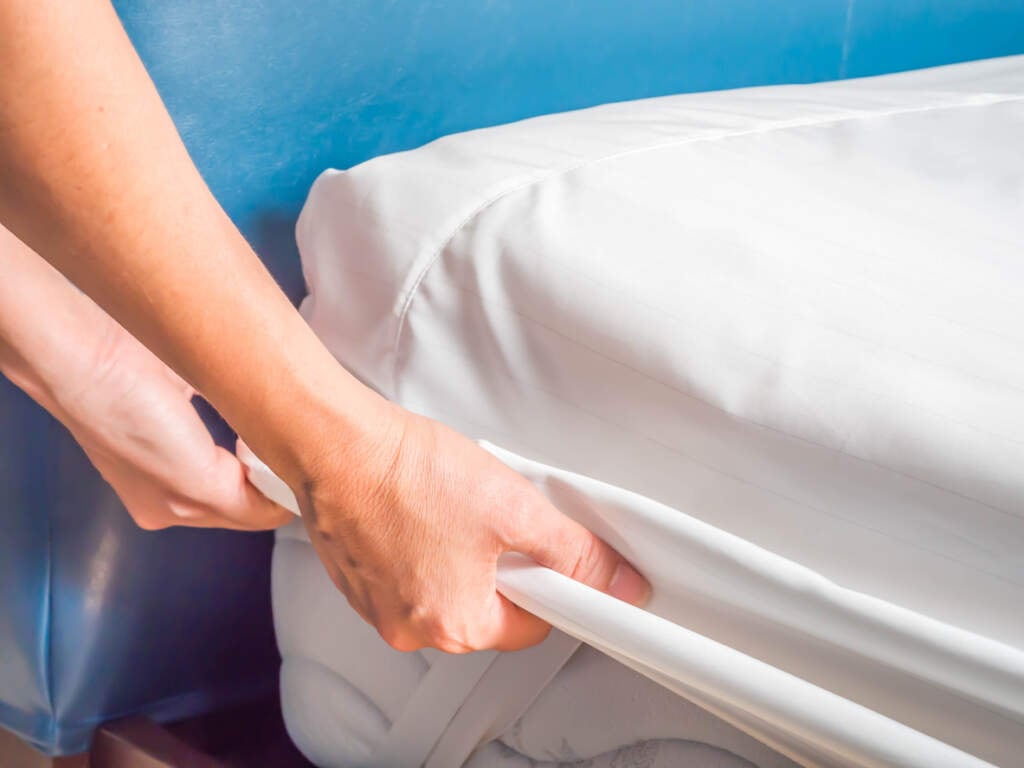
Mattress protectors offer plenty of benefits, including:
- Protection against spills and stains
- Prevents dust mites and allergens
- Prolongs the life of your mattress
- Adds extra comfort
- Easy to clean and maintain
There are several types of mattress protectors, each with its own benefits, including:
- Waterproof mattress protectors: these are designed to protect your mattress from spills and stains. Usually, waterproof mattress protectors are made from materials like vinyl, polyester or polyurethane, which create a barrier between your mattress and moisture or liquid.
- Hypoallergenic mattress protectors: hypoallergenic mattress protectors are designed to protect against dust mites, pet dander and other allergens. They’re made from materials like microfibre, which prevent allergens from penetrating your mattress.
- Cooling mattress protectors: cooling mattress protectors are designed to keep you cool while you sleep, which is particularly helpful for hot sleepers. Typically, they are made from natural materials like bamboo, which are breathable and moisture-wicking.
- Quilted mattress protectors: quilted mattress protectors are designed to add a layer of comfort and softness to your mattress. Typically, they are made from materials like cotton or polyester and are quilted or padded for extra cushioning.
Are Mattress Protectors Worth It?
If you want to protect your mattress and prolong its lifespan, mattress protectors are essential. By providing a barrier against stains and spills, you can keep your mattress clean and get the most out of it.
Mattress Toppers
Mattress toppers, similar to mattress protectors, add an extra barrier between you, your sheets and your mattress.
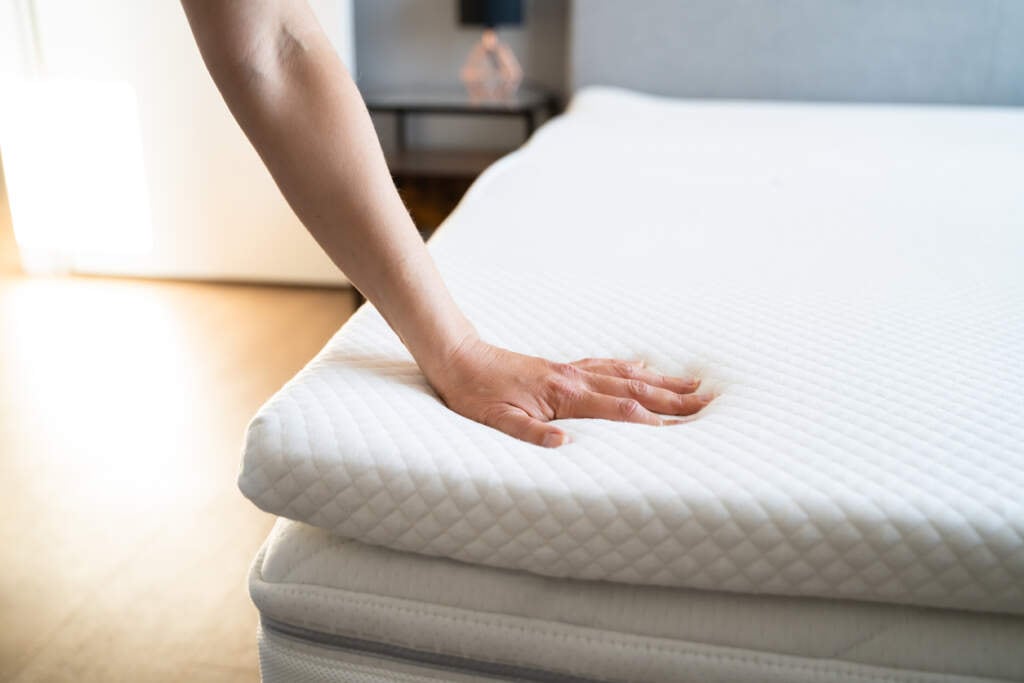
What is a Mattress Topper?
Typically, mattress toppers are designed to add extra comfort and support to your bed. If you are wondering what is the best material for a mattress topper, we’ll run through the most common materials and how they can benefit you.
Commonly, mattress toppers are made from memory foam, latex, down and feather, wool, cotton and polyester.
Memory foam is a popular material for mattress toppers. Memory foam conforms to your body shape, providing effective support, pressure relief and comfort. Memory foam mattress toppers are also great for motion isolation, making them ideal for couples sleeping in the same bed.
Latex is a natural material known for its durability. Latex mattress toppers offer great support and pressure relief, and they are also resistant to dust mites and allergens.
Down and feather mattress toppers offer a soft and luxurious feel. Made from soft feathers, these mattress toppers provide excellent insulation and soft cushioning.
Wool mattress toppers are naturally breathable and moisture-wicking, making them an ideal choice for hot sleepers. They provide insulation and are naturally flame-resistant.
Cotton mattress toppers are breathable, soft and comfortable. They’re ideal for those who prefer a cooler sleeping surface.
Polyester mattress toppers are easy to care for, affordable and lightweight. They also offer a soft, cushioning sleeping surface.
What is the Best Mattress Topper For You?
There are several materials used in mattress toppers, each with its own benefits. When choosing your mattress topper, consider your personal preferences and needs, including the level of support and cushioning you need, any allergens, your sleeping temperature, and the softness or firmness you prefer.
If you prefer a soft surface to sleep on, down and feather or wool mattress toppers may be a good choice for you. If you’re looking for extra support and pressure relief, your best choice is likely a memory foam or latex mattress topper. If you tend to sleep hot, a wool or cotton mattress topper will likely suit you. Lastly, if you have allergies, go for a latex mattress topper, or one labelled hypoallergenic.
Sheets Sets
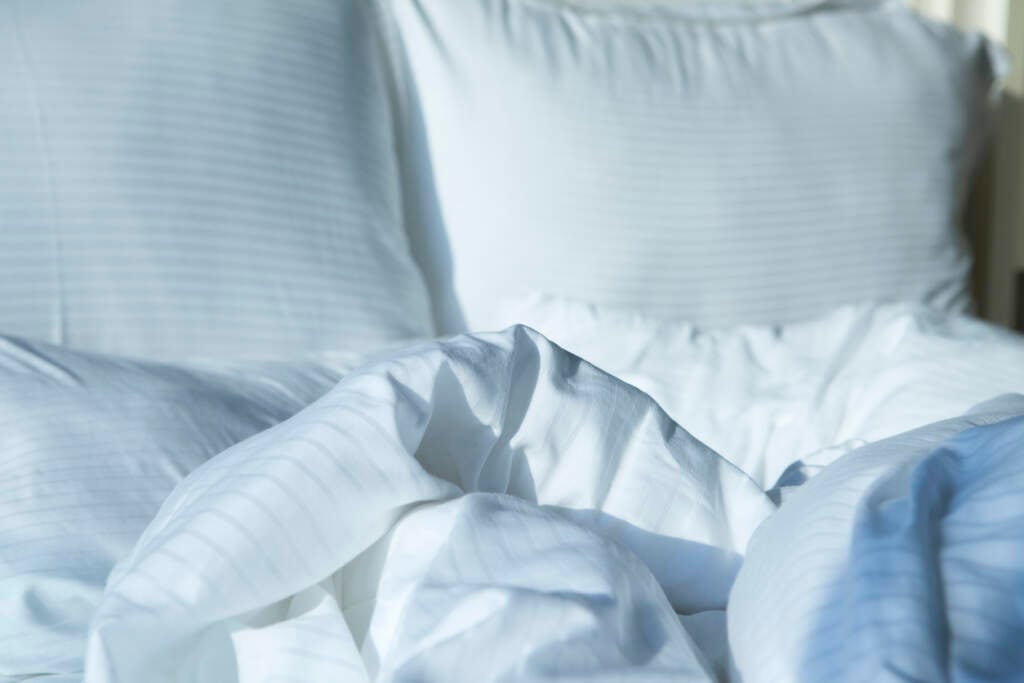
The right sheet set is essential when it comes to bedding. From making sure your sheets are soft and comfortable to temperature-regulating and hypoallergenic sheets, there is plenty to consider when purchasing a sheet set.
What are the Best Sheet Sets?
Sheets come in a variety of materials, including cotton, silk, flannel, bamboo and linen. What you choose depends on your preference. When it comes to sheets, each type of material has its own unique benefits. The most common materials used for sheets are:
Cotton: Cotton is one of the most popular choices for sheets, due to its soft, durable and breathable properties. Cotton sheets are comfortable, hypoallergenic and easy to care for. When buying cotton sheets, it’s important to consider the thread count, as this can affect the feel and overall quality of the sheets. A higher thread count generally means a softer and more luxurious feel–but it can also affect the breathability of the fabric. Cotton sheets also come in a variety of weaves, from the crisp, cool feel of percale to the soft and silky feel of sateen, so consider what kind of feel you prefer.
Egyptian cotton: Sheets made from Egyptian cotton tend to feel more luxurious and are more expensive. Egyptian cotton sheets are soft, durable and breathable. Egyptian cotton is highly sought after and usually associated with luxury bedding due to its soft, silky feel. Like cotton, it’s important to consider the thread count and weave of the material.
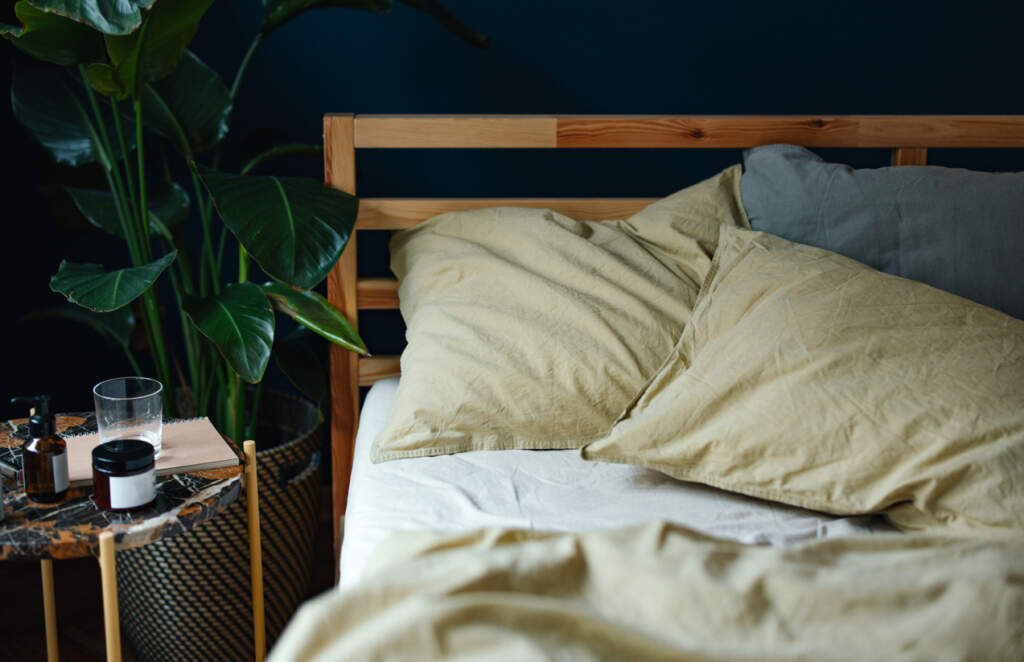
Linen: Breathable, moisture-wicking and temperature-regulating, linen is a great choice for sheets, especially in summer. One of the most notable features of linen sheets is their durability. They’re highly resistant to wear and tear, lasting for years to come. They do wrinkle, but linen sheets also become softer with each wash.
Polyester: Polyester is a synthetic material, often blended with other materials to create durable and affordable sheets. They’re crisp and smooth and resistant to wrinkles and stains. Polyester sheets are easy to care for but do not have the same breathability or moisture-wicking properties as natural materials like cotton, linen or bamboo. Check to see what the polyester is blended with to reap the most benefits.
Microfibre: Microfibre, like polyester, is a synthetic material. It’s made from tightly woven fibres and is soft, lightweight and affordable. Microfibre sheets are typically blended with polyester and nylon, making them long-lasting. They’re moisture-wicking and resistant to wrinkles and stains.
Silk: Silk sheets are known for their soft and luxurious feel. They’re a popular choice due to how comfortable they are, but silk sheets are also naturally hypoallergenic, gentle on the skin, temperature-regulating, breathable and moisture-wicking. However, not all silk is created equal. Go for 100% mulberry silk to reap the most benefits with a momme weight of at least 19 or higher.
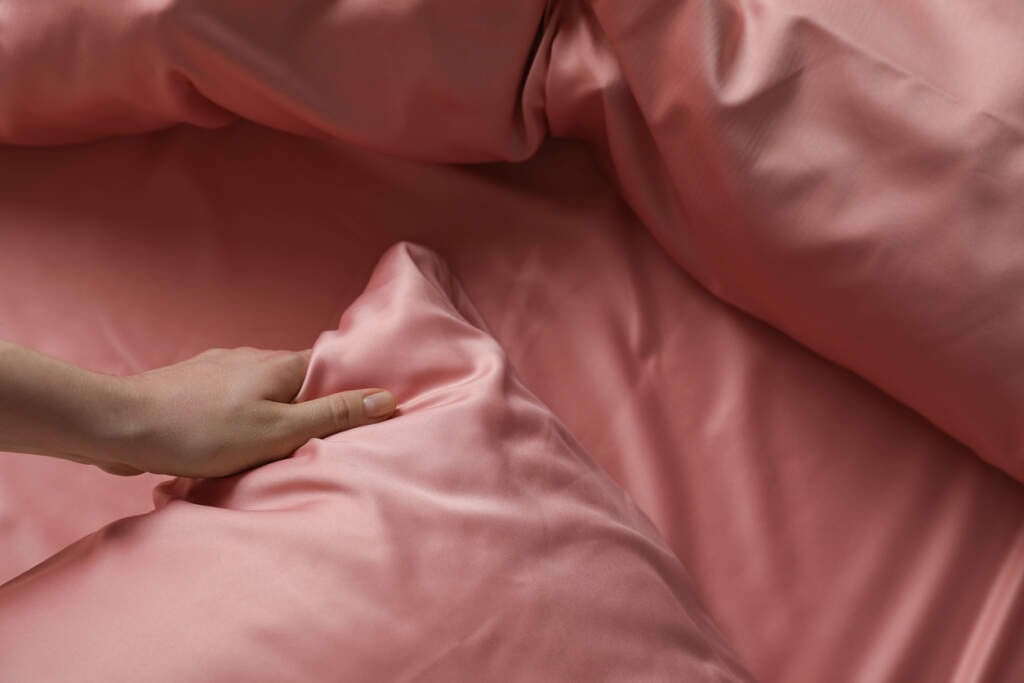
Bamboo: Eco-friendly, soft and moisture-wicking, bamboo is a popular choice for sheets. They’re soft and silky, making them super comfortable, as well as naturally hypoallergenic and moisture-wicking. When buying bamboo sheets, consider the blend. Bamboo blended with other natural materials like cotton and linen offers the most benefits, as opposed to bamboo blended with synthetic materials.
Flanellette: During the colder months, flanellette sheets are the go-to. Made from brushed cotton, flannelette sheets are fluffy and soft, as well as insulating, keeping you warm while you sleep. Because they are so breathable, flannelette sheets help regulate body temperature to prevent overheating. Consider the weight and thickness of the fabric–heavier sheets tend to be warmer.
Often, materials are combined to create a unique blend with desirable benefits. Make sure to check the blend of the materials. When choosing a sheet blend, consider the properties that are most important to you, whether that is the softness, durability or moisture-wicking properties or temperature-regulating properties.
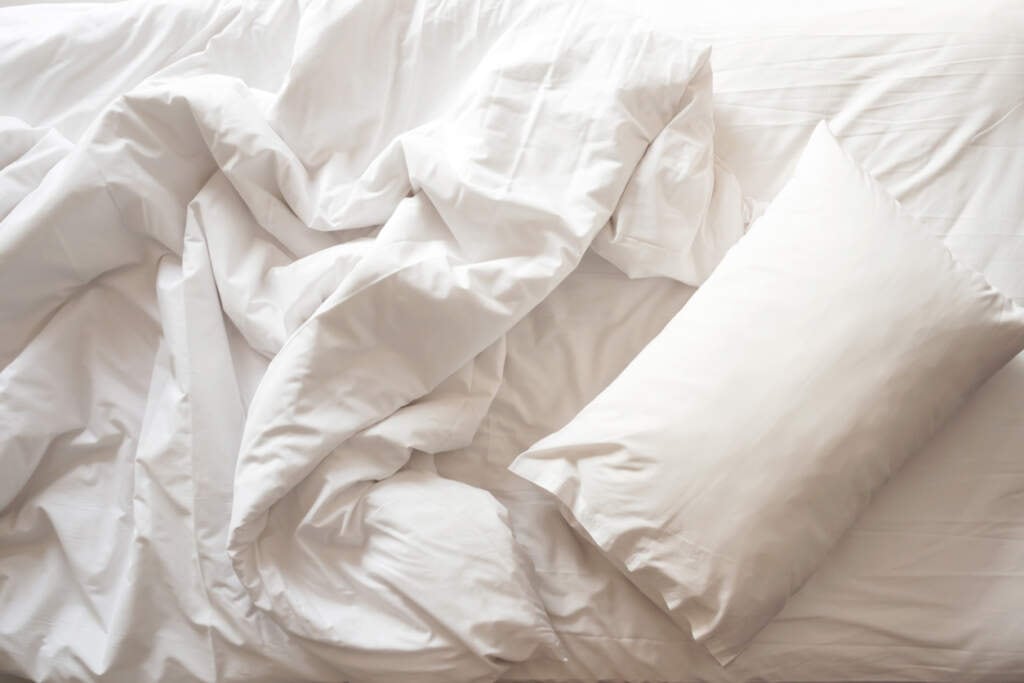
Weave
When buying a sheet set, consider not just the material and thread count, but the weave. The weave refers to how the fabric is constructed, with the most common weaves being percale and sateen.
What is a Good Thread Count for Sheets?
Thread count refers to the number of threads woven into one square inch of fabric in a sheet. Thread count is only an indicator of quality for cotton sheets–not for microfibre, bamboo, linen or other popular sheet materials.
For cotton sheets, look for a thread count of at least 200 to 400.
For Egyptian cotton sheets, opt for a thread count of 300 to 400.
Keep in mind that a higher thread count doesn’t necessarily equate to quality–other factors, like the blend and quality of weaving, can impact the feel and durability of sheets.
How to Choose a Quilt
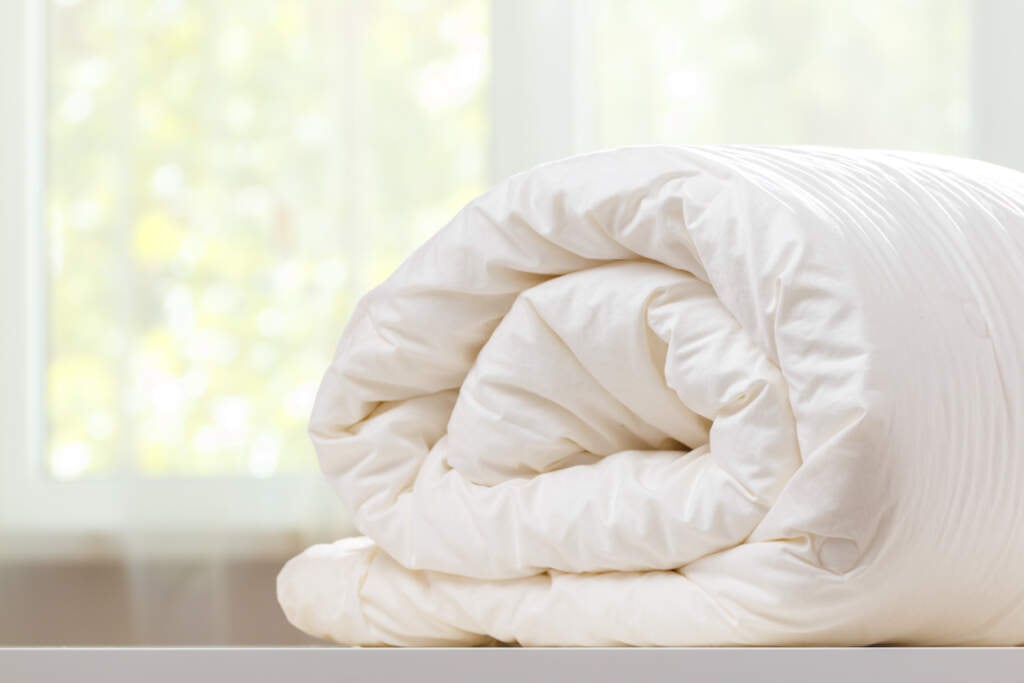
Nothing is better than a cosy, soft quilt. When buying a quilt, consider the weight, GSM, and filling.
- Weight: Quilts come in a range of weights, from lightweight to heavy. If you are after a warmer quilt, go for a heavier one, and vice versa.
- GSM: So you’ve heard of it, but what does GSM mean for quilts? GSM refers to ‘grams per square meter’, and is a measure of the weight and density of the filling material in a quilt. The higher the GSM, the more filling there is in the quilt, making it thicker, warmer and cosier.
- Filling: The filling of a quilt can impact how cosy it feels. Common fillings include:
Down is lightweight, soft and offers great insulation, but often expensive.
Wool is naturally insulating, hypo-allergenic, breathable and moisture-wicking.
Silk is lightweight, breathable and soft, as well as hypoallergenic and moisture-wicking, but tends to be more expensive than other types of quilt.
Polyester is budget-friendly, but also soft and lightweight.
Cotton is often used for lightweight summer quilts as it is breathable, soft and hypoallergenic.
What quilt you buy should depend on the climate, your temperature while sleeping and whether you suffer from allergies or a respiratory condition.
Pillows
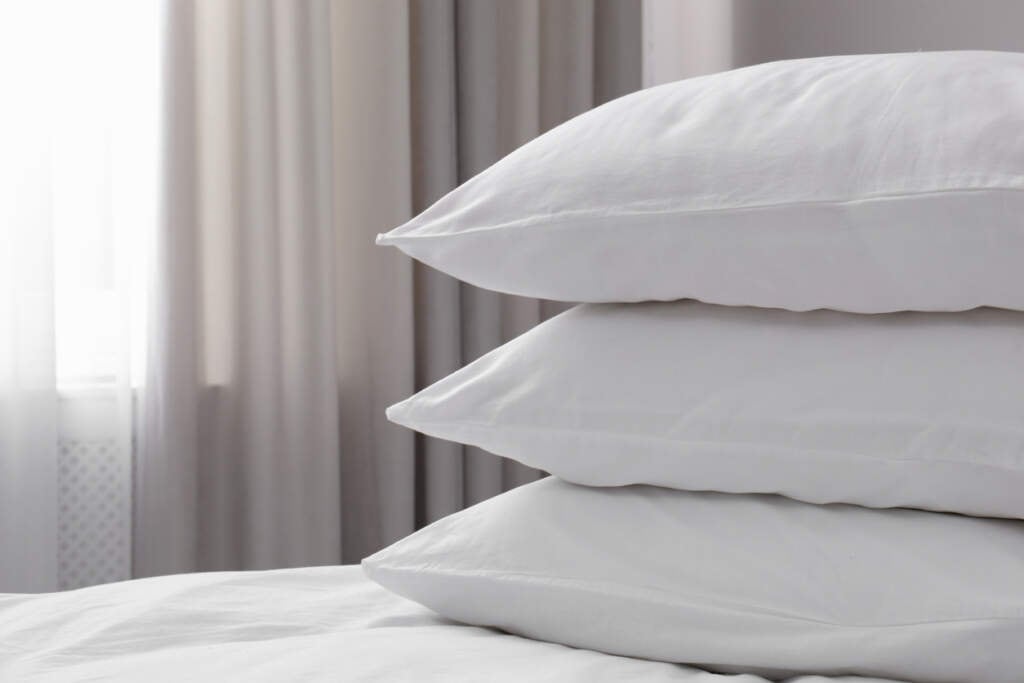
When buying pillows, there are a couple of things to consider.
- Height: The height of a pillow refers to its thickness, which can have a significant effect on your comfort and spinal alignment. Consider your usual sleeping position and the natural curve of your neck.
- Firmness: Pillows come in varying levels of firmness, from soft to firm. Consider your personal preference, sleep position and any injuries or chronic pain.
- Filling: So, which is the best pillow filling? Each has its own benefits:
Down pillows are lightweight, soft and provide great support for the head and neck. - Memory foam pillows are designed to contour to the shape of your head and neck, offering excellent support and pressure relief.
- Latex pillows are firm and supportive, making them a great choice for people who sleep on their back or stomach. They’re also naturally hypoallergenic and dust-mite resistant.
- Polyester pillows are lightweight and affordable, making them a popular choice. They are hypoallergenic and easy to care for.
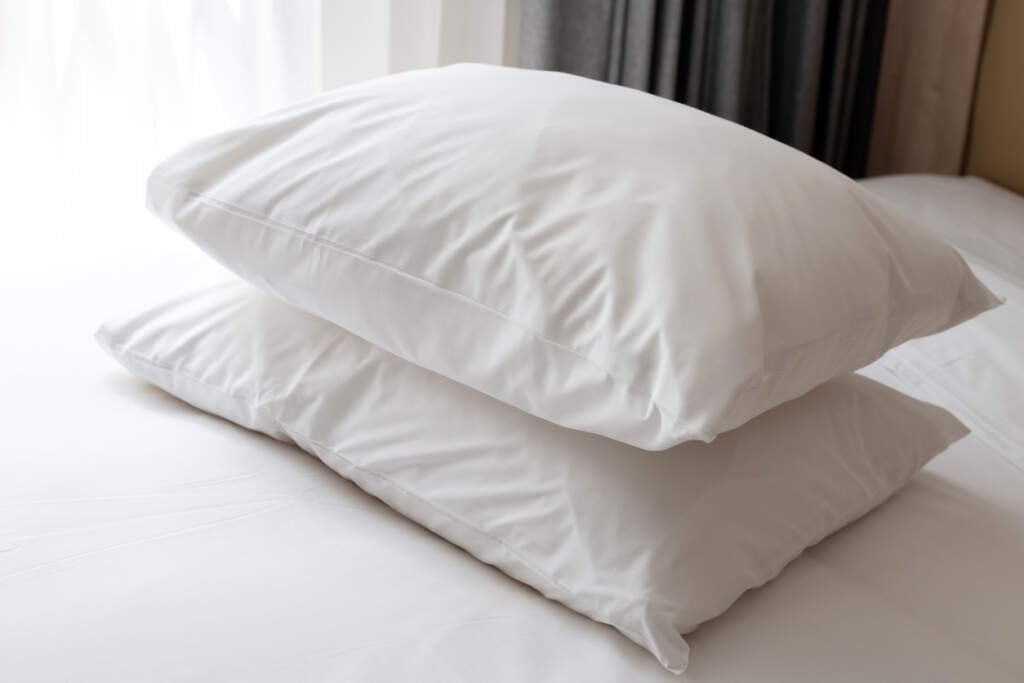
Sleeping Position
Perhaps the most important factor to consider when choosing pillows is your usual sleeping position.
- Stomach sleepers: soft pillows
Stomach sleepers often prefer softer pillows that can prevent them from being overly elevated, causing their neck and spine to be strained.
- Back sleepers: medium firm pillows
Often, medium-firm pillows are ideal for back sleepers. Medium firm pillows will provide support to the neck and head, without pushing or elevating the head too much.
- Side sleepers: firm pillows
Typically, side sleepers benefit from firm pillows that keep their neck, head and spine in alignment.
- Combination sleepers: medium firm pillows
Combination sleepers who frequently change their sleeping position may benefit from a versatile medium firm pillow. These pillows provide enough support for side and back sleeping, while still remaining soft enough for stomach sleeping.


